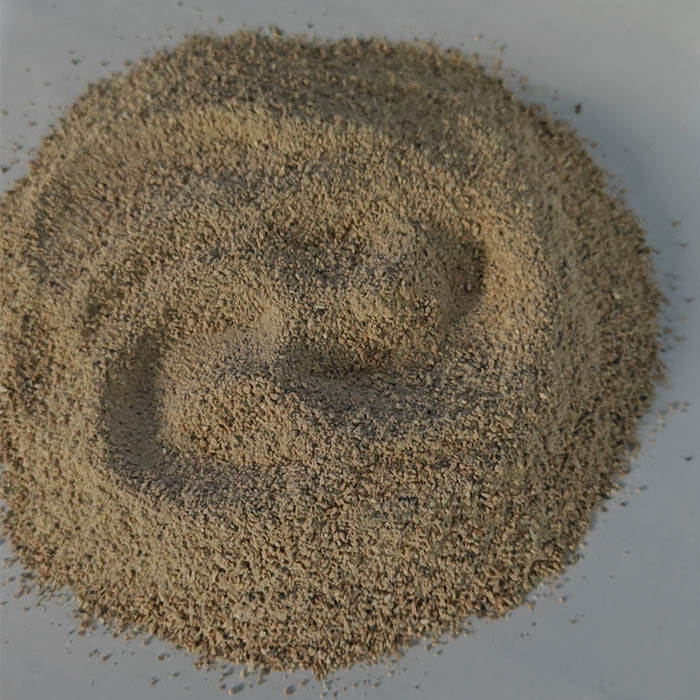Aug . 14, 2024 12:38 Back to list
Thermally Conductive and Electrically Insulating Materials for Advanced Engineering Applications and Innovations
The Importance of Thermally Conductive Electrically Insulating Materials
In today's rapidly advancing technological landscape, the integration of heat management and electrical insulation is more crucial than ever. Thermally conductive electrically insulating materials serve a pivotal role in a wide range of applications, from electronics to renewable energy systems. These materials not only prevent electrical conduction but also facilitate effective heat dissipation, ensuring the reliability and longevity of various devices.
Key Characteristics
Thermally conductive electrically insulating materials are characterized by their ability to conduct heat while preventing the flow of electricity. This unique combination is achieved through careful engineering of the material's composition. Common materials include ceramics, polymers, and composite materials infused with special fillers that enhance thermal conductivity without compromising electrical insulation properties.
For instance, materials like aluminum oxide and silicon nitride are popular in high-temperature applications due to their excellent thermal conductivity and electrical insulating properties. On the other hand, polymers such as epoxy resins and silicone compounds have been modified with thermally conductive fillers to make them suitable for various electronic applications.
Applications
1. Electronics Cooling In the electronics industry, managing heat is critical as electronic components generate heat during operation. Thermally conductive insulating materials are often used in heat sinks, thermally conductive adhesives, and packaging materials to efficiently dissipate heat away from sensitive components like CPUs and GPUs. This not only prevents overheating but also enhances the overall performance and reliability of the devices.
thermally conductive electrically insulating materials

2. LED Lighting With the growing popularity of LED technology, the need for effective thermal management has surged. Thermally conductive insulating materials are vital in LED lighting systems, as they help to dissipate heat generated by the LED chips while safeguarding the electrical components. This prevents thermal degradation, extending the lifespan of the lights and maintaining their luminous efficiency.
3. Renewable Energy Systems In renewable energy technologies, such as solar panels and wind turbines, heat management is essential for optimal performance. Thermally conductive insulating materials are employed in various components, including inverters and converters, to ensure efficient heat transfer and prevent electrical failures, contributing to the sustainability and reliability of these energy systems.
4. Automotive Applications The automotive industry is increasingly leveraging thermally conductive electrically insulating materials, especially with the rise of electric vehicles (EVs). These materials are crucial in battery management systems, where they facilitate effective heat dissipation while preventing electrical hazards. This is vital for ensuring the safety and performance of EV batteries during operation.
Future Trends
The demand for thermally conductive electrically insulating materials is poised to grow as technological advancements continue to shape the landscape. Innovations in material science are likely to yield even more efficient composites, enhancing thermal performance while maintaining superior insulating properties. Researchers are exploring nano-fillers and innovative polymer blends that promise to push the boundaries of what is currently achievable, opening up new opportunities in emerging fields such as wearable electronics and advanced battery technologies.
Conclusion
In conclusion, thermally conductive electrically insulating materials are essential for the modern technological landscape, playing a critical role in the efficient operation of various devices across multiple industries. As the need for effective thermal management continues to grow, these materials will remain at the forefront of innovation, enabling the development of safer, more reliable, and more efficient technologies. The synergy between thermal conductivity and electrical insulation not only enhances product performance but also paves the way for a sustainable technological future.
-
Eco-Friendly Granule Covering Agent | Dust & Caking Control
NewsAug.06,2025
-
Fe-C Composite Pellets for BOF: High-Efficiency & Cost-Saving
NewsAug.05,2025
-
Premium Tundish Covering Agents Exporters | High Purity
NewsAug.04,2025
-
Fe-C Composite Pellets for BOF | Efficient & Economical
NewsAug.03,2025
-
Top Tundish Covering Agent Exporters | Premium Quality Solutions
NewsAug.02,2025
-
First Bauxite Exporters | AI-Optimized Supply
NewsAug.01,2025
